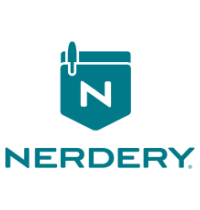There you are, minding your business, aggregating your CSS and JS while waiting for your morning toast. Then the Vogons arrive, and they’re wiping out your front-end performance best practices to put in a new intergalactic superhighway, http/2. What’s a front-end developer to do when everything starts spinning, and we still need to stay on top of life, the universe and everything? The answer is more complicated than “limit yourself to 42 requests.” Should we still concatenate our front-end assets into great big lumps on all our pages? Or are we now free to scatter small modular files willy nilly? Don’t panic! New front-end performance techniques need not be entirely unlike what we’ve learned so far about optimizing our source order, CSS, JS, fonts and images to leap across the galaxy as quick as can be. We’ll look at what the advent of http/2 means for us, when to begin changing our strategies for speed, and how to stay calm despite the whirling vortices surrounding us all.
In this talk, we’ll look at how http/2 affects front-end performance. To do that, we’ll recap some basics of how browsers process web requests, and how that’s changing in http/2. We’ll look at where the web is in terms of adoption of http/2, and when the right time is for us to tweak our optimization strategies. Best practices and real-world results take time to develop when a sea change like this happens. So it can be challenging to know how to adapt when there are no definitive answers. We’ll work through some of the options for aggregation strategies, font loading and image optimization that are available with emerging changes. The goal is not to definitively say “Here’s the new way to do things,” but to evaluate various tactics, and encourage attendees to further ponder and investigate and share what they learn as they experiment with new front-end performance optimizations.
Key takeaways for this session:
- We may want to reconsider aggregation strategies for CSS and JS.
- Brief look at other performance strategies like font loading and responsive images.
- Look at various stats and studies on http/2, and what that might mean for your site.
- Some speculation on what this might mean for Drupal front-end development.












